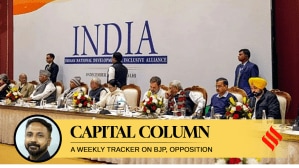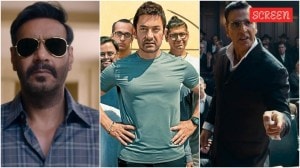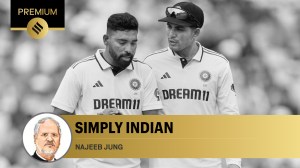Happy ending of Happy Endings
Bollywood needs to trade formulaic conclusions for more emotionally fulfilling stories,as was demonstrated by a few films in 2013
In June,a day after the release of Raanjhana,director Anand L Rai sneaked into Chandan theatre to watch the last 15 minutes of his film. Slightly nervous,Rai was keen to see how the audience reacts to the films ending. Of the reactions he observed inside the theatre,he particularly remembers the gatekeepers reaction. Will you make a sequel to this film? Is he not going to get up? Rai recounts being inquired about the fate of his hero – the lovelorn Kundan battling coma towards the end of the film.
The gatekeepers reaction was a reflection of the eternal hope of the Indian moviegoer,that no matter what,the hero of a Hindi film will rise above death. Rais hero eventually doesnt get up,he doesnt even get the girl – not even in his death. But the death brings closure to the film,leaving the audience with the bittersweet taste of life and love.
Defying one of Hindi commercial cinemas most used contrivances of a happy ending,the film went on to become one of the years most commercially successful films,earning over Rs 100 crore at the box office.
Tragic endings are hardly a new trend in Hindi commercial cinema. These are,in fact,one of the oldest tricks in its book. Some of the most successful Hindi films have been tragedies,such as Mughal-e-Azam,Pyaasa,Mother India,Ganga Jamuna and Anand. What can be more dark and tragic than mother killing her son in Mother India,Indias first submission to the Oscars, says Mahesh Bhatt. His Vishesh Films produced Aashiqui 2 where its protagonist,a self-destructive rockstar gives his life as an act of sacrifice for his love.
However,post the 1970s,Hindi films started to appear as if they have been made using the same cookie cutter outright comedies,family drama,action-masala or a blend of the three. These were family-friendly and came with happy endings. Filmmakers have often explained this by pointing out at the socio-economic condition of majority of the people in this country. It is escapist cinema,where the common man saw himself in the films hero who not only beat up the baddies but also got the girl. It is the only respite he got from lifes travails, director Dibakar Banerjee had told The Indian Express in an earlier interview.
But the last few years have seen Hindi cinema attempting to free itself from the commercial trappings. At the end of the day,the audience come to listen to a complete,emotionally fulfilling story. The protagonists are real people,with which they can relate, explains Rai,whose Raanjhanaa is about a commoner pining for unrequited love.
The past year,in fact,saw a few other films that traded the walking-into-the-sunset-holding-hands conclusions for stark ones that left the audience sniffling and wiping their tears quietly. While Kai Po Che,the years first bonafide blockbuster,had a bloodied climax amid the Gujrat riots that leaves one of its protagonists dead,Lootera retained the tragic love story of its primary source material,O Henrys classicThe Last Leaf. Sanjay Leela BhansalisGoliyon Ki Rasleela Ramleela too,despite all its opulence and grandeur,stayed true to the text of Romeo Juliet.
In contrast,many big-budget formula films lost out to these flicks in critical acclaim and box-office earnings,proving that the formulae the shirtless six-pack hero fighting the baddie and love is fulfilling only when it concludes in a marriage are passé. Among these were Akshay Kumars Boss,Saif Ali Khans Bullett Raja,Shootout at Wadala starring John Abraham and Anil Kapoor.
Looteras director Vikramaditya Motwane says happy endings were always a producers demand rather than the audiences. Audience are ready for whatever you give them. They dont care if it is a sad or a happy ending, he says. He adds that going against a conventional happy ending doesnt necessarily make it sad. A bittersweet conclusion will always have a lingering,lasting impact on the audience, he says.
sankhayan.ghosh@expressindia.com












